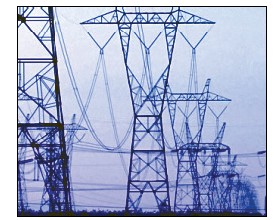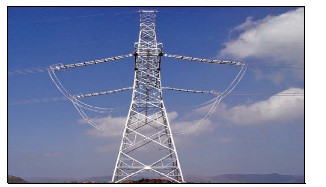
The Indian power sector is growing with exponential electricity demand
and the impetus of the government towards faster capacity addition. The
growth of the Indian transmission sector is impressive but the current
installed transmission capacity is nowhere close to the total installed
generation capacity. The government has put forth an ambitious project on
targeted capacity addition of 1,00,000 mw and 75,000 mw of inter-regional
power transfer capacity by 2017. There is a need to have similar corresponding
investments in the transmission sector. Over the past few years, the pace of
investment in this segment has increased after the realization that
strengthening both the state and central transmission networks is vital for the
power sector.
The Indian transmission sector has mostly relied on 400KV lines and with the
power generation capacity addition planned, there was a need to add huge
network of UHV transmission line with better cost and transmission
efficiencies, apart from lower environmental impact. Due to right of way (ROW)
issues, which is becoming a major concern on construction of transmission
Lines, it was important to move the transmission capacities on High Voltage
Direct Current (HVDC) as against HVAC system, as it offers better economics,
halved right-of-way requirements, lower transmission losses and better
stability. As is evident from statistics released by Central Electricity Authority,
around 34,000 ckm of HVDC lines are planned for in the XII Plan period as
against 18,000 ckm envisaged in the XI Plan.
One major advantage of HVDC is its low cost for transmission of very high
power over very long distances and is suitable for interconnecting two AC
networks in asynchronous manner. Second great advantage is that the losses
are quite low. The total losses in the transmission of power over 2,000 km
are in the order of five percent. The third major advantage is that fewer lines
are needed with less right of way requirement. For example, a transmission
of 6,000 mw can be achieved with just one line using 800kV HVDC whereas
transmitting the same power with 800kV HVAC would require two double
circuit lines.
Modern HVDC systems are equipped with developed technologies and
equipment combined with the experience of the old installations. An HVDC
system offers more value addition than an AC transmission with advantages
such as enhanced transmission distance in over head & underground transfer
and stable & efficient power transmission while carrying more than double the
power. Right of way can also be suitably challenged with HVDC needing much
smaller space and hence lowering the environmental impact.

In addition to moving strongly on HVDC, it is a welcome step that India is in
the process of developing 1,200kV AC transmission lines. The challenge before
the central transmission utility is to build a strong hybrid backbone of UHV
lines that will allow for large transfers from one part of the country to the other
and integrate the larger capacities that are going to come up both in the public
and private sectors. For successfully implementing the capacities planned
during the XI and XII Plan periods, the government should facilitate and
address some key challenges.
The ratio of investment, which ideally should have been 2:1:1 amongst the
three broad segments of generation, transmission and distribution, needs to be
realized. Lack of an integrated approach on transmission planning will also
hamper the development of the sector.
Some of the factors which need to be considered in
transmission planning would be to clear the backlog of
inadequacies and add a certain degree of redundancies and
cushions to take care of eventualities and to promote power
trading. Open Access in transmission will help creating a
strong transmission system. Open Access in distribution,
where consumer will have option to source power from
wherever it wants to, is economical.

While some progress has been made at reducing the
transmission and distribution (T&D) losses, these still remain
substantially higher than the global benchmarks, at
approximately 33 per cent. Curbing T&D losses will require
deployment of smart grid solutions. The future requires a very
"smart" grid and it is the onus of state and Central transmission
utilities to necessitate the creation of Smart Grid. Leveraging
concepts from the developed countries, emerging economies
such as India can leapfrog directly to smart electricity
infrastructure.
The competitive bidding route that is being followed for
private players to bid for transmission lines has received
enthusiastic response from the private players. The current
investment of private players in power transmission is limited
but with the success stories of private power transmission
projects ranging from transnational transmission projects to
large inter-regional schemes, percolating even to inter-state
power transmission lines can evolve the role of the private
sector participation in the transmission sector. The private
sector, thus, has a crucial role to play in the transmission
sector. The efficiencies that the private sector brings in are
vital for the transmission segment as the ultimate beneficiary
will be the consumer. It will always be desirable to have more
and more players in the market, and reap the same benefits
that consumers have enjoyed after private sector entered the
telecommunication sector.
(Anil Sikka is CEO - Power, BS TransComm Ltd)